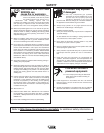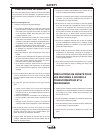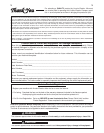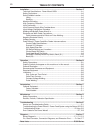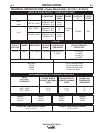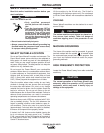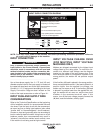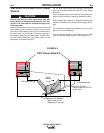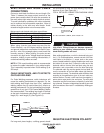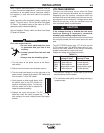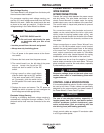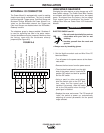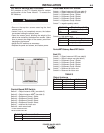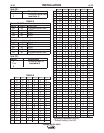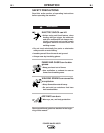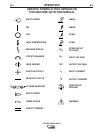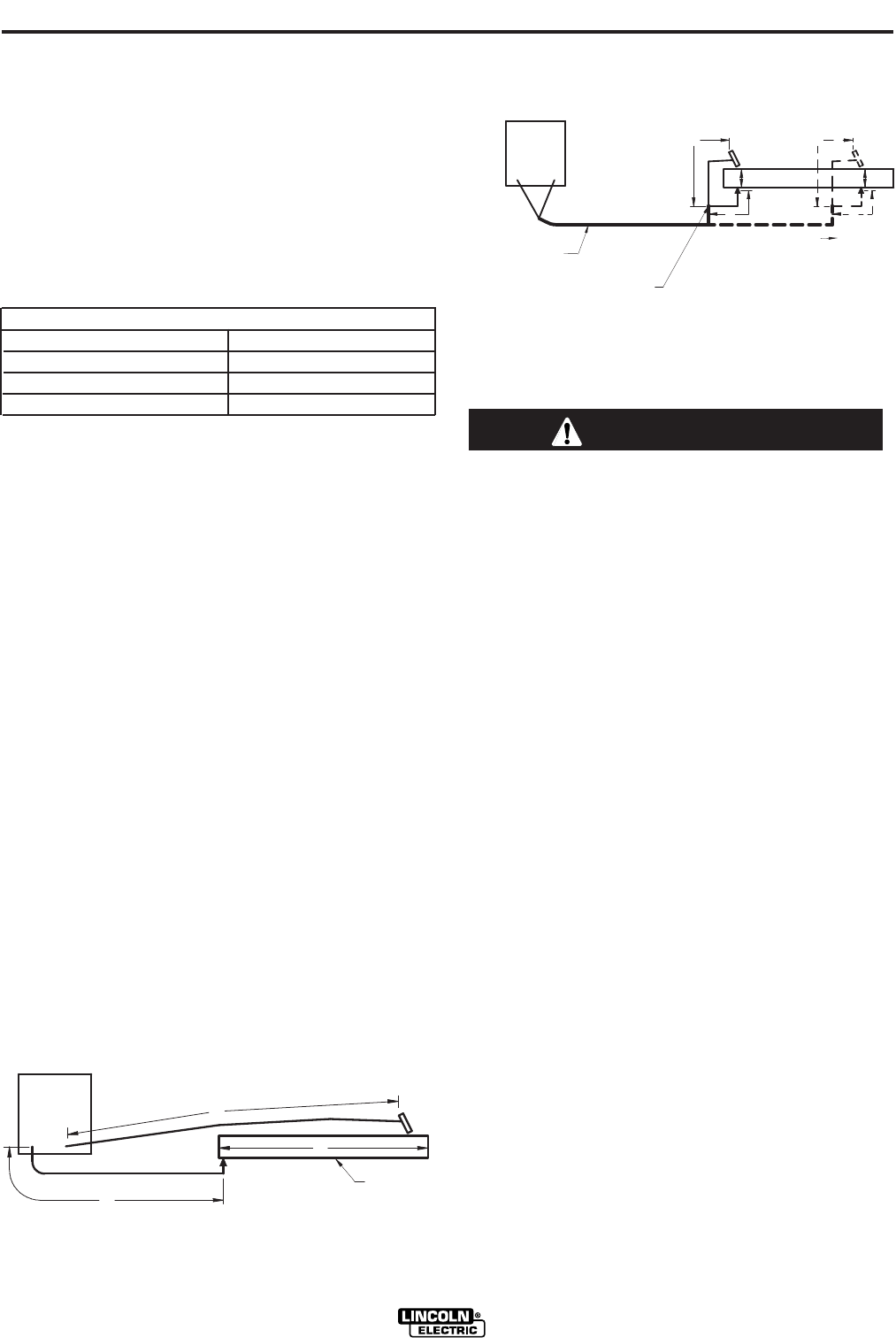
A-5
INSTALLATION
POWER WAVE® 655/R
A-5
ELECTRODE AND WORK CABLE
CONNECTIONS
Connect a work lead of sufficient size and length (Per
Table 1) between the proper output terminal on the
power source and the work. Be sure the connection to
the work makes tight metal-to-metal electrical contact.
To avoid interference problems with other equipment
and to achieve the best possible operation, route all
cables directly to the work and wire feeder. Avoid
excessive lengths and do not coil excess cable.
Minimum work and electrode cable sizes are as follows:
TABLE 1 (For cable length up to 100 ft, or 30 meters)
CURRENT (60% Duty Cycle) MINIMUM COPPER
400 Amps 2/0 (67mm2)
500 Amps 3/0 (85mm2)
600 Amps 3/0 (85mm2)
When using inverter type power sources like the
Power Waves®, use the largest welding (electrode
and ground) cables that are practical. At least 2/0 cop-
per wire - even if the average output current would not
normally require it. When pulsing, the pulse current
can reach very high levels. Voltage drops can become
excessive, leading to poor welding characteristics, if
undersized welding cables are used.
NOTE: K1796 coaxial welding cable is recommended
to reduce the cable inductance in long cable lengths.
This is especially important when Pulse welding up to
350 amps.
CABLE INDUCTANCE, AND ITS EFFECTS
ON PULSE WELDING
For Pulse Welding processes, cable inductance will
cause the welding performance to degrade. For the
total welding loop length less than ft.(m), traditional
welding cables may be used without any effects on
welding performance. For the total welding loop length
greater than ft.(m), the K1796 Coaxial Welding Cables
are recommended. The welding loop length is defined
as the total of electrode cable length (A) + work cable
length (B) + work length (C) (See Figure A.3).
For long work piece lengths, a sliding ground should
be considered to keep the total welding loop length
less than ft.(m). (See Figure A.4.)
FOR A DETAILED CONNECTION DIAGRAM USING
K1796 COAXIAL CABLE, SEE PAGE F-4.
When pulsing, the pulse current can reach very
high levels. Voltage drops can become excessive,
leading to poor welding characteristics, if under-
sized welding cables are used.
------------------------------------------------------------------------
Most welding applications run with the electrode being posi-
tive (+). For those applications, connect one end of the elec-
trode cable to the positive (+) output stud on the power
source (located beneath the spring loaded output cover near
the bottom of the case front). Connect the other end of the
electrode cable to the wire drive feed plate using the stud,
lockwasher, and nut provided on the wire drive feed plate.
The electrode cable lug must be against the feed plate. Be
sure the connection to the feed plate makes tight metal-to-
metal electrical contact. The electrode cable should be sized
according to the specifications given in the work cable con-
nections section. Connect a work lead from the negative (-)
power source output stud to the work piece. The work piece
connection must be firm and secure, especially if pulse weld-
ing is planned. Excessive voltage drops caused by poor work
piece connections often result in unsatisfactory welding per-
formance.
NEGATIVE ELECTRODE POLARITY
CAUTION
B
A
C
FIGURE A.3
POWER
WAVE
WORK
A
C
B
P
OWER
WAVE
FIGURE A.4
K1796 COAXIAL CABLE
MEASURE FROM END
OF OUTER JACKET OF
C
ABLE
C
A
B
WORK
S
LIDING GROUND



